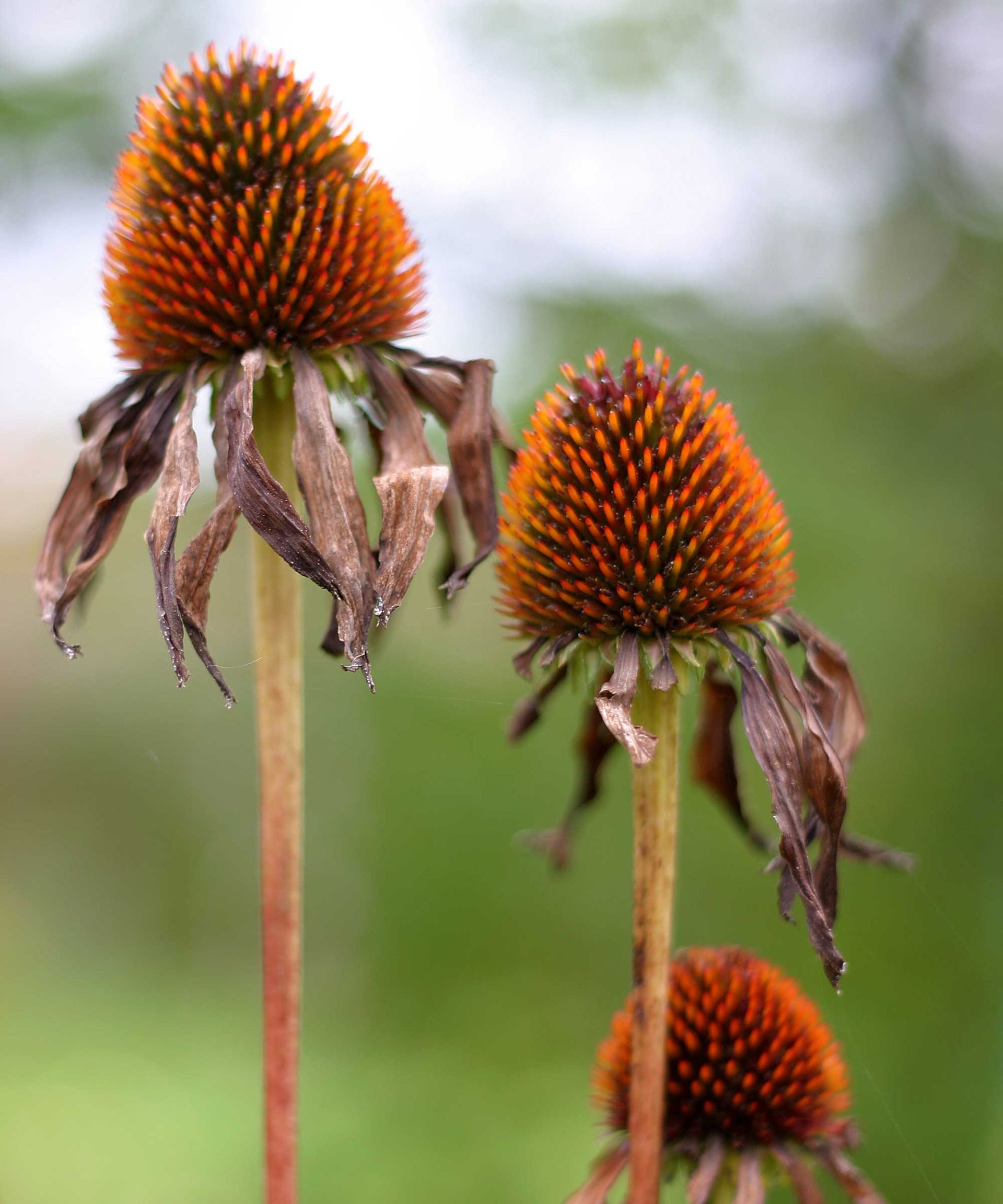Q: I planted several new coneflowers (echinacea) in my garden this year as part of a drought-tolerant prairie-garden program. They have started to bloom and are beautiful, but I wonder what to do when the flowers fade. Should I deadhead them, and if so, what’s the best approach?
A: Dead plants are beneficial in more ways than one, and echinacea is no exception. Removing dead flowers will encourage plants to make more blooms, rather than channeling their energy into seed production. This means you can continue to enjoy their colorful display for longer, as well as visit bees and butterflies.
Regular deadheading also creates a tidier overall look for your flower beds and containers and, according to gardening expert Tony O’Neill, “can prevent disease and pest infestation, while keeping your plants healthy.”
Tony O’Neill is an accomplished gardening expert, author and educator. With a passion for simplifying gardening practices, he has inspired a large audience through his popular YouTube channel and website SimplifyGardening.com. Tony’s experience empowers people to grow lush gardens and connect with nature.
Echinacea dazzles in the garden with their vibrant hues
(Image credit: bgwalker/iStock/Getty Images Plus/Getty Images)
How to cut dead echinacea flowers
The echinacea deadheading process is very simple, as landscaping expert Bryan Clayton explains:
- ‘Identify spent flowers. These are the ones that look faded, shriveled or dry.’
- “Cut the stem of the faded flower down to the closest set of leaves,” Bryan continues. “If you want to encourage bushier growth, you can cut back to a leaf node further down the stem.” He uses a pair of sharp and clean garden pruners for the job. “Make sure you don’t cut into the main stem or the rosette of leaves at the base,” adds Tony.
- “Dispose of the removed flower heads in your compost bin or green waste,” Bryan says.
“After deadheading, give your echinacea plant a good watering to help it recover from the stress of the process,” recommends Gardeninghood.com’s Becky Decker. “Consider applying a balanced fertilizer to provide the nutrients needed for healthy growth and flowering.”
Bryan is the CEO and co-founder of GreenPal, an online marketplace that connects homeowners with local lawn care professionals. Bryan’s entrepreneurial journey began in landscaping; she founded Peach Tree Inc., one of the largest landscaping companies in the state of Tennessee, growing it to over $10 million a year in annual revenue before being acquired by Lusa Holdings in 2013.
(Image credit: Sharon Lowe / Alamy Stock Photo)
When to deadhead coneflowers
You can continue to decapitate your coneflowers throughout the summer, as and when needed. However, cutting off the last bloom at the end of the season means missing out on the opportunity to have free plants next year.
Leaving some of the spent flower heads intact in late summer and fall will allow your echinacea to self-seed and proliferate naturally in your garden, says Bryan. Allowing some faded flowers to develop into seed heads will also help make your garden more wildlife-friendly. They will provide a valuable food source for birds during the winter, Bryan says. They can also offer beneficial insects a safe place to shelter during the colder months.
Alternatively, you can harvest the seeds once the flower heads have dried and store them for planting wherever you like in your garden.
In late winter, when the plants begin to regrow, you can cut off the dead echinacea stems at the base.
Leave some flowers to develop seeds
(Image credit: MHjerpe/iStock/Getty Images Plus/Getty Images)
Coneflowers are a beautiful, low-maintenance addition to any garden, and dying them properly is an easy way to enjoy a prettier display for longer. Just remember to stay away from common deadheading mistakes for best results.
#deadhead #coneflowers #expert #advice #longer #lasting #floral #display
Image Source : www.homesandgardens.com


